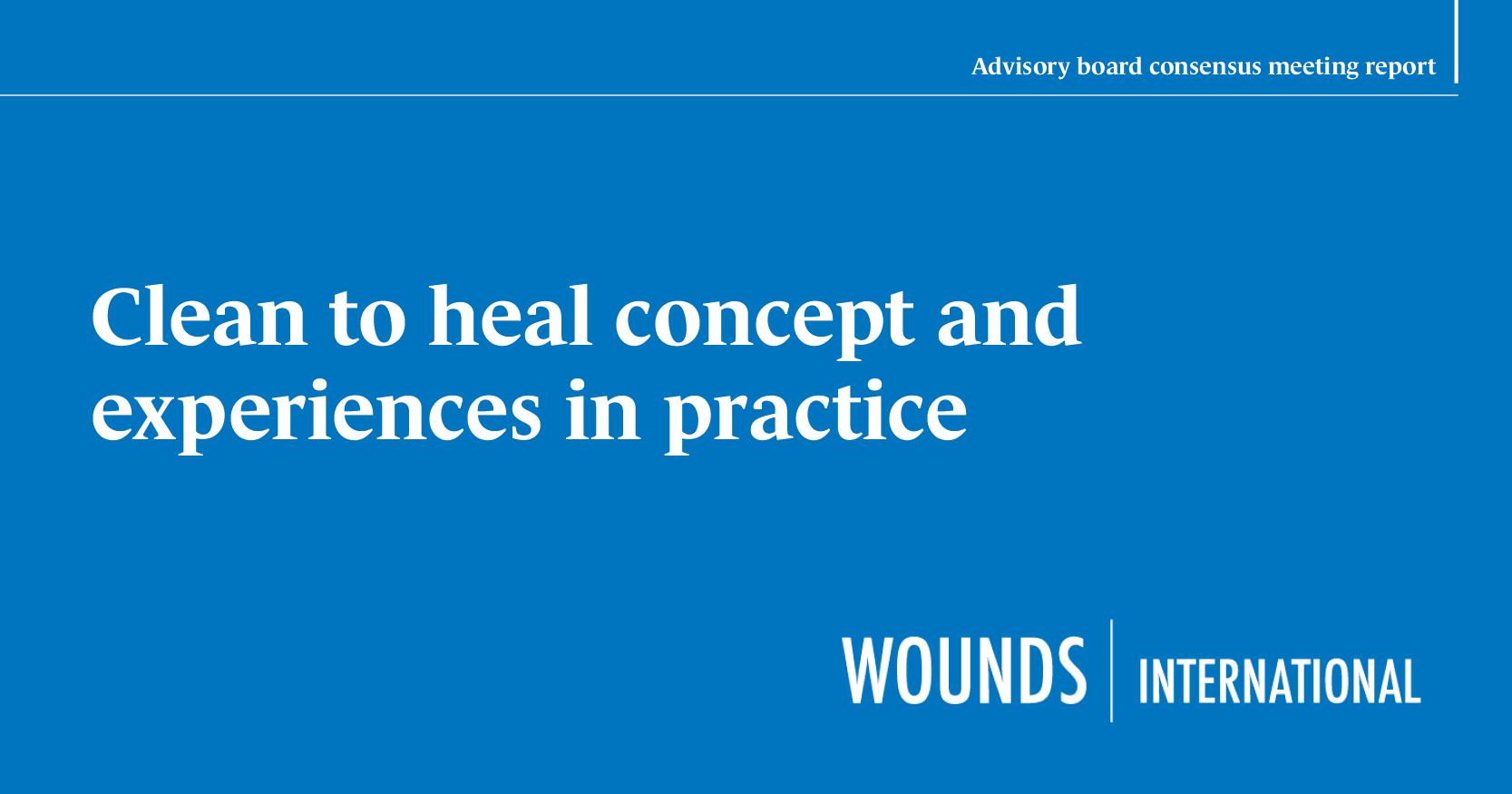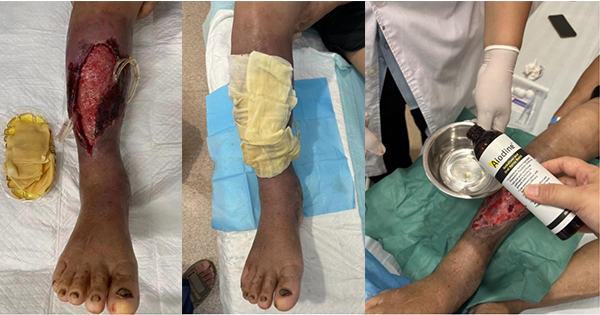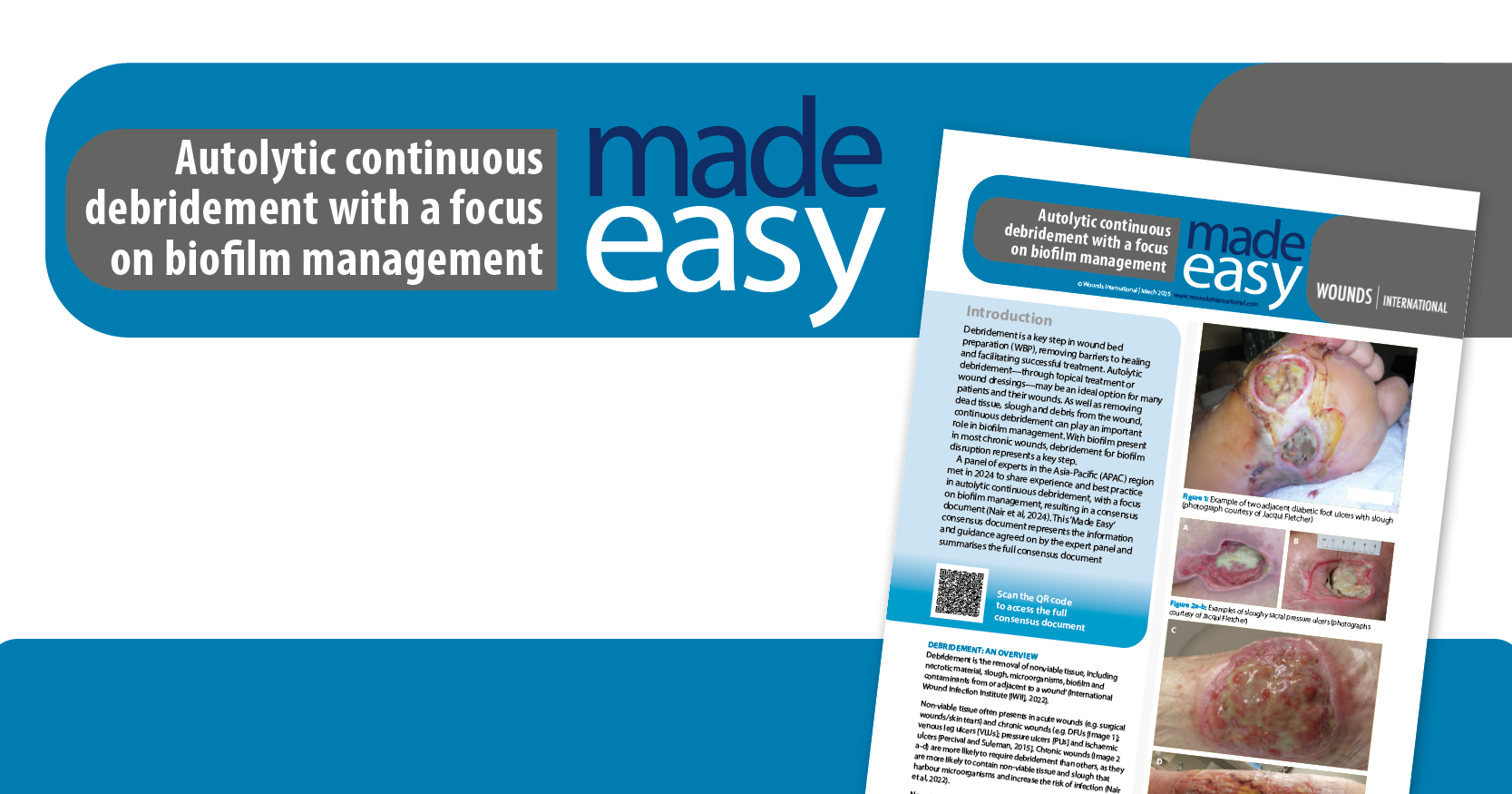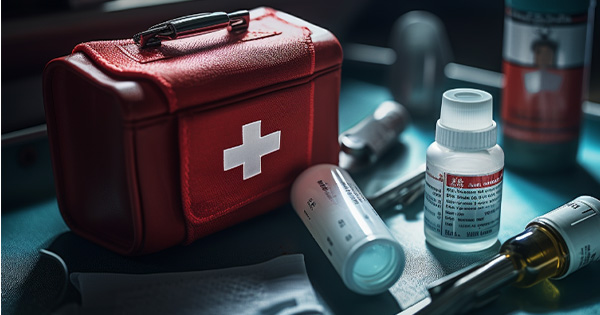‘Clean to heal’ is a simple and proven concept: cleaning the wound is essential to healing (“if you want the wound to heal, you need to clean it”). In this context, ‘cleaning’ effectively means removing barriers to healing, which may include slough, debris, necrotic tissue, bioburden and/or biofilm (see Box 1 for detailed definitions of cleaning versus cleansing for the purposes of this meeting report).
‘Clean to heal’ aligns with the principles of wound bed preparation (WBP), a multifaceted approach incorporating cleansing and debridement, which are well established. Therefore, the focus should be on the importance of cleaning as a step within this existing process, as it prepares the wound for healing and creates an optimal wound-healing environment. Debridement may involve oxidative agents; a process known as oxidative debridement. Depending on their concentration, oxidative agents can help degrade, soften or eliminate necrotic tissue and/or slough (Nair et al, 2023). Clear guidelines are needed to support decision-making on optimal cleaning options for the individual patient and their wound, appropriate product selection and integrating effective wound cleaning into existing treatment pathways.
In practice, ‘clean to heal’ should be integrated into a structured ‘step-down then step-up’ approach to treatment, as part of a full treatment pathway [Figure 1].
Holistic assessment
All wound management must start with a thorough and accurate assessment. Looking at the whole patient and communicating with them about their needs, preferences and expectations is key. A comprehensive assessment of the wound bed to determine appropriate cleansing, guide WBP and select dressing options should be incorporated into a structured assessment framework, such as the Triangle of Wound Assessment (Protz and Drouard-Segard, 2015), TIMERS (Atkin et al, 2019), or M.O.I.S.T. (Dissemond et al, 2022). It is important to select the right treatment plan and wound care based on the identified barriers to healing.
The advisory panel emphasised the importance of the periwound skin and that this should not be overlooked, both during the assessment stage and as treatment progresses [Box 2]. The periwound was flagged as an area that can be neglected in practice but is an important factor in overall wound healing and skin health.
LeBlanc et al (2021) defined the periwound skin as “the area around the wound that may be affected by wound-related factors and/or underlying pathology”.
While clinicians need to provide consistent and evidence-based care by following local policies and procedures, it is important to use clinical judgement and establish what the individual and their wound need and ‘thinking outside of the box’ where necessary. Care should always be tailored to the individual: their wound, their general health and their practical circumstances (WUWHS, 2020).
Communication with the patient is vital, making sure to listen to their perspective and emphasising decision-making as a shared process [Box 3]. The patient should be asked about their overall health, lifestyle, medical/skin history, as well as the wound itself, taking into account how this may impact their daily life and their expectations throughout the treatment phase.
Cleaning options in practice
Traditionally, the most common solutions for cleaning wounds have been tap water, saline and Ringer’s solution. On a global level, saline remains the most widely used solution for chronic wound cleaning in clinical practice; however, methicillin-resistant Staphylococcus aureus and Pseudomonas aeruginosa can grow and survive in saline (Dong et al, 2020). Studies have shown the benefits of using antiseptic agents over saline or water (Kramer et al, 2018). Additionally, the advisory board explicitly stated that while saline is not always the best option for wound cleaning, and while this does not constitute ‘the whole picture’, it is an important step that can be optimised for the individual patient and their wound.
As published research has increased – particularly in terms of biofilm awareness – antiseptics have come to play an increasingly important role in ensuring more effective wound cleaning (Sakarya et al, 2014). A variety of topical antiseptics are commonly used in practice to clean and irrigate wounds, including chlorhexidine, octenidine (OCT), hypochlorite, polyhexamethylene biguanide (PHMB), povidone-iodine (PVP-I) and hypochlorous acid (HOCl), among others (Snyder et al, 2017).
In clinical practice, antiseptics may be used in various scenarios (Nair et al, 2023), including:
- Prevention of acute wound infection: e.g. traumatic wounds, skin tears, bites and gunshot wounds
- Prevention of post-surgical wound infections, such as surgical site infection (SSI), particularly in cases with a high risk of infection – e.g. traumatic and contaminated wounds
- Treatment of clinically manifested wound infections that show clinical signs and symptoms of local or spreading infection – e.g. locally infected wounds
- Decolonisation of wounds colonised with multi-drug resistant bacteria
- Preparation for – or in conjunction with – surgical, sharp, or conservative-sharp debridement or wound cleansing of chronic wounds, as part of a biofilm-based treatment approach.
Cleaning techniques
The wound should be cleaned at every dressing change. It should be noted that wound cleaning should be performed carefully to avoid causing further trauma to the wound (Alves et al, 2021). However, the advisory board noted that it is crucial to clean the wound thoroughly, employing proper cleaning techniques, as opposed to ‘just getting the wound wet’.
Contact time (i.e. how long the wound is exposed to an antimicrobial) can be a controversial topic: this can be limited by constraints on how much time the clinician has available with the patient, and findings from in vitro and animal model studies may not accurately reflect clinical practice in real-world settings – for example, contact time in laboratory research often exceeds 24 hours, which does not apply to real-world scenarios (Johani et al, 2018).
There is increasing evidence that for some antiseptics, such as HOCl, an exposure time of 3–10 minutes is sufficient to penetrate and impact biofilms (Day et al, 2017; Harriott et al, 2019; Robson, 2020), suggesting it is a viable option for real-world practice.
Hydrocyn Aqua
Hydrocyn Aqua solution supports the ‘clean to heal’ concept. It is indicated as a debridement agent that cleans the wound, removes bacteria and biofilm and accelerates wound healing (Nair et al, 2019). The solution can be used in conjunction with Hydrocyn Aqua gel to optimise the full WBP process (cleansing, debridement and moisturising of the wound bed and surrounding skin).
Hydrocyn Aqua’s active component is HOCl, which is non-toxic when used in low concentrations, and exhibits potent and rapid antimicrobial activity to accelerate wound healing (Wolcott and Fletcher, 2014). See Box 4 for more information on HOCI.
HOCI’s antimicrobial effect is effective and rapid, with a close to 100% reduction in the number of microbial species observed within 60 seconds (Bactiguard, 2023).
In practice, HOCl meets the requirements for a topical antiseptic for wound care use. It has been proven to be fast-acting, non-toxic to humans at concentrations of use, easy to apply, cost-effective, non-irritating and non-sensitising (CDC, 2021). In comparison to iodine, HOCl has been found to have favourable effects on fibroblast and keratinocyte migration, making it an ideal active agent for improved wound healing (Sakarya et al, 2014).
Non-toxicity
When selecting a product for clinical use, it is vital to balance efficacy with patient safety. The ideal antimicrobial agent should release concentrations low enough to minimise toxicity while effectively destroying or inhibiting microorganism growth (IWII, 2022). The expert group agreed that Hydrocyn Aqua provides an effective option without causing harm to the patient or their wound.
As HOCl is naturally occurring and is produced by the body’s own neutrophils, Hydrocyn Aqua mimics the immune system to kill bacteria, fungi and viruses. Hydrocyn Aqua is biocompatible, tissue-friendly and inhibits different cellular processes within bacterial species to reduce biofilm and increase oxygen perfusion (Nair et al, 2019).
Antimicrobial stewardship
Antimicrobial stewardship (AMS) is an important consideration, and Hydrocyn Aqua has not been found to contribute to antimicrobial resistance. Hydrocyn Aqua is suitable for ‘hard-to-heal’ wounds (characterised by inflammation, potential infection, and ischaemia); a focus on early intervention in cleansing these wounds may help to reduce risk and prevent infection from developing, which reduces the need for further treatment such as systemic antibiotics. A ‘back to basics’ approach, with an emphasis on cleansing, is the foundation of an AMS-informed approach (Fletcher et al, 2020).
The World Health Organization has identified HOCI as the most potent disinfectant effective against a wide range of pathogens, while being environmentally safe and not contributing to antimicrobial resistance (WHO, 2020).
Presentations and aetiology
Hydrocyn Aqua is suitable in a wide range of wounds, including acute and chronic wounds, cuts, lacerations/abrasions, locally infected wounds, stage 1–4 pressure injuries/ulcers, venous stasis ulcers, diabetic ulcerations, surgical wounds (both intraoperative and postoperative) and burns.
Hydrocyn Aqua is also indicated for a broad range of tissue types, including joints, tendons, cartilage, bones, and ligaments as well as sensitive areas such as ears, eyes, nose, mouth, skin, mucosa and the peritoneal cavity. The advisory board noted anecdotally that Hydrocyn Aqua is useful in peritoneal lavage procedures.
Conclusions
The advisory board agreed that a focus on cleaning wounds makes a positive difference in practice, facilitating healing and improving outcomes for patients. For clinicians, it is important that the decision-making process is made as simple as possible through clear guidance, with clinical judgement applied to the individual patient and their holistic needs. The ‘clean to heal’ concept should be integrated into existing pathways, with a focus on cleaning wounds and removing the barriers to healing.
Hydrocyn Aqua provides an ideal option in practice to clean wounds and promote healing in a range of presentations and aetiologies.





